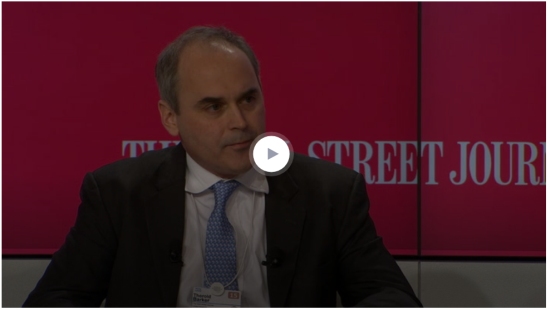- within Real Estate and Construction topic(s)
- The 7% of fastest-growing companies are twice as likely to divest underperforming businesses as others.
- Companies like GE and Siemens demonstrate the power of flexibility in a time of volatility.
- Reimagining businesses and an agile approach is now essential for success.
Business leaders once treated disruption as a rare shock; like an unwelcome storm to endure until it passed. In 2025, that mindset is dangerously outdated.
New data shows that disruption is no longer episodic it is systemic. It cuts across industries, geographies and markets.
How leaders handle this must evolve, too. The leadership imperative is not simply to weather disruption, but to design strategies that thrive on uncertainty itself.
Disruption: The new operating system
The AlixPartners Disruption Index, drawn from our yearly survey of senior business leaders, tells a consistent story: volatility and uncertainty are structurally higher, and the pace of disruptive change continues to accelerate.
Key external shocks - geopolitical tensions, climate pressures, demographic shifts - are not mere cycles to be waited out. Rather, they are deep, interconnected forces reshaping the fundamentals of business models, supply chains and labour markets. In this context, the greatest leadership risk is to remain wedded to plans and assumptions built for a world that no longer exists.
Reconfiguration, not just productivity
It is tempting to point to optimism about AI or recent productivity gains and declare the worst is behind us. Certainly, 80% of executives are optimistic about the impact of AI, and 90% of CEOs see productivity rising in their organizations, according to AlixPartners' research. Yet the real test is not how well businesses implement new tools or automate existing processes. The hardest and most important challenge is how they reconfigure portfolios, capital structures and operating models to build enduring resilience.
Structural shifts in trade, interest rates and regulation mean the cost of capital remains high, and business models built for the past decade's easy money will not survive the next. The majority of companies are now adapting their supply chains and pricing strategies, restructuring manufacturing footprints and facing up to the reality that normal is not coming back.
Learning from GE's bold action
Winners separate themselves through decisive moves. The top 7% of fast-growing companies are twice as likely to divest underperforming businesses and pursue transformative M&A. They reduce capital intensity, optimize balance sheets and channel investment into areas aligned with sustainability, digital transformation and demographic shifts. This is strategy as chess - they sacrifice outdated assets while doubling down on future winners.
GE illustrates this boldness. After a century as a diversified giant, it chose to deconglomerate, focusing on aviation, healthcare and energy. By breaking apart, the company concentrated resources in areas aligned with long-term global demand, where it could create the most value. In doing do, GE proved that even iconic enterprises must radically evolve to stay competitive.
Strategic agility is reinforced by organizational flexibility. Leading firms emphasize leadership development, deep talent pipelines and cultural adaptability. Practices such as leadership rotation, succession planning and cross-functional experience keep organizations dynamic. Building inclusive, diverse workforces remains both a moral imperative and a catalyst for innovation and resilience.
How Siemens is embracing optionality
Traditional hierarchies excelled in stable environments, but today they slow innovation and can lead to missed opportunities. In a volatile landscape, rigidity is the enemy.
Organizations must cultivate optionality: building multiple pathways, iterating quickly and pivoting based on imperfect but timely data.
AI is enabling this shift, creating real-time coordination across networks. Siemens offers a compelling case: the company is deploying AI agents that work alongside operators on the factory floor, guiding troubleshooting, optimization and parameter changes as issues arise. Instead of waiting on centralized engineering, frontline teams act within safeguards, while AI surfaces likely causes, suggests set-point refinements and records decisions for traceability. This empowers frontline intelligence, shortens feedback loops and accelerates smarter outcomes.
The best leaders combine clear direction with distributed autonomy. They trust teams at every level to act decisively, shifting from slow consensus toward rapid cycles of execution and adaptation.
Using disruption to reimagine the enterprise
The most dangerous response to systemic uncertainty is inertia. If disruption is the baseline, it must become a core operating principle. That means:
- Using external shocks as catalysts to redeploy capital and talent.
- Continuously reshaping portfolios and cost structures to reflect changing realities.
- Accelerating transformation in response to new technologies, competitors and customer demand.
- Investing in digital, workforce upskilling and cultural adaptability to build competitive advantage.
Pandemics, wars, climate events and cyberattacks are no longer outliers; they are ongoing features of the landscape. What is new is the recognition that stability will not return. Waiting on certainty will increasingly separate the disrupted from the disruptors.
Those who lean hardest into transformation - using disruption as fuel for renewal - will get results. Leadership today is not about predicting the future, but about having the courage to reimagine, reposition and act, again and again. Passivity is the greater risk. The opportunity belongs to those prepared not just to adapt, but to reinvent.
The normal we once knew is over. The new reality is continuous disruption and perpetual transformation. The best leaders will be those who, rather than waiting for turbulence to pass, learn to fly in it.
Originally published by World Economic Forum.
The content of this article is intended to provide a general guide to the subject matter. Specialist advice should be sought about your specific circumstances.


